
Roots
A quiet contemplation often begins with the simplest touch, the gentle sensation of strands between fingertips. For many, this seemingly mundane interaction with hair holds echoes, whispers of ancestry, and the profound wisdom passed through generations. It is a daily communion, a subtle acknowledgment of something far greater than mere aesthetic adornment.
The strands themselves, from root to tip, carry stories, silent yet potent, linking present expressions to a deep, living past. This foundational section delves into the very substance of textured hair, recognizing its unique biology as a vessel for cultural memory and personal expression.
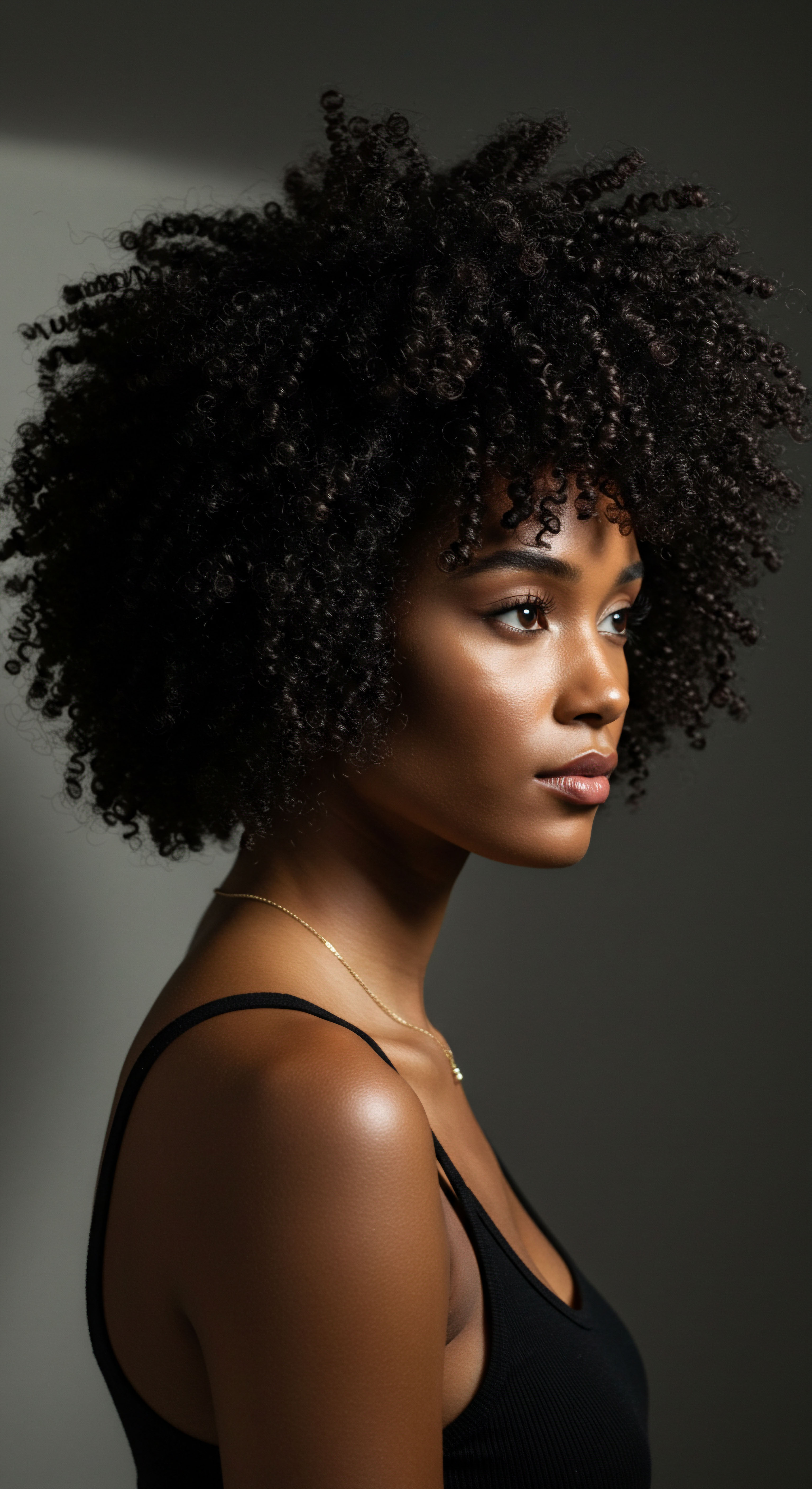
Hair’s Unique Structure and Ancestral Traces
The human hair shaft, a complex biological creation, presents remarkable variations across populations. For those with coils, curls, and waves, this variation is particularly striking. The distinct elliptical or flattened cross-section of textured hair, paired with its unique cortical cell arrangement, grants it a specific strength and spring. These characteristics are not random; they represent adaptations shaped by environments and the migrations of peoples across continents.
Understanding this intrinsic design begins to unveil the inherent resilience and beauty held within these strands. It moves beyond superficial appearance, prompting a deeper respect for what the hair itself embodies.
Consider the variations in curl patterns, from broad waves to tightly packed Z-coils. Each pattern, a distinct architectural marvel, reacts differently to moisture, tension, and manipulation. The hair’s natural inclination to coil often creates points of fragility, demanding specific care protocols.
This scientific appreciation for hair’s architecture allows for practices that honor its intrinsic nature, moving away from universal, often unsuitable, beauty standards. It is a scientific grounding that allows for a culturally informed approach to hair care.
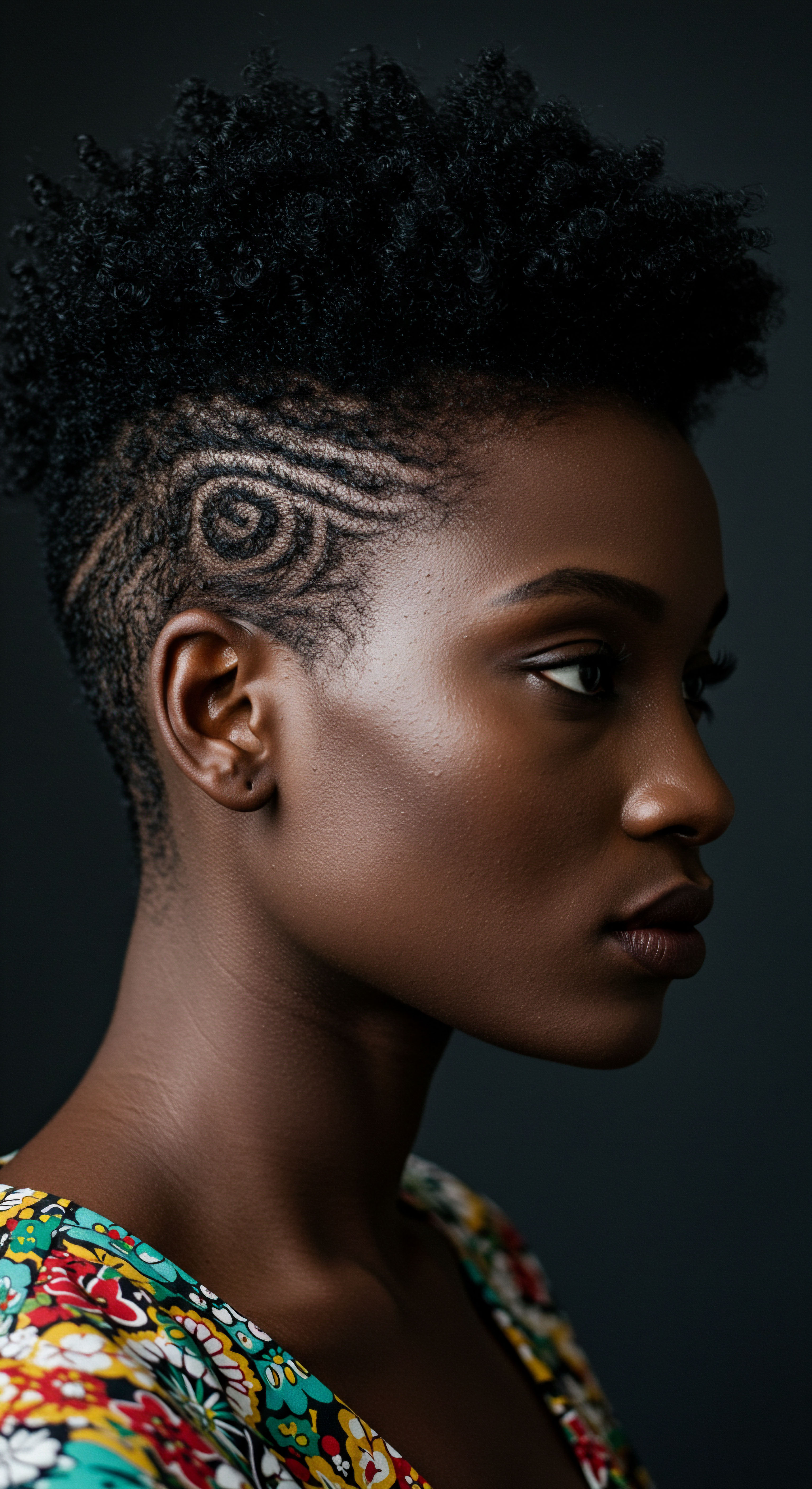
The Language of Hair Types
To truly appreciate textured hair, a precise lexicon becomes a companion. While numerical and alphabetical systems (like the widely used 3A to 4C scale) offer a starting point for classification, their utility lies in providing a shared reference for care and styling. Yet, they barely scratch the surface of the lived experience.
Beyond these classifications lies a more intuitive understanding, one gained through touch, observation, and communal dialogue. This shared language allows for discussions of hair porosity, density, and elasticity, qualities that shape daily routines and product selections.
Hair’s inherent biology offers a scientific basis for understanding its diverse expressions and the distinct care it requires.
This shared vocabulary aids in diagnosing specific hair needs, guiding selections for cleansers, conditioners, and styling aids. For instance, knowing whether one’s hair thrives with rich emollients or lighter humectants guides product choice. This knowledge empowers individuals to make informed decisions for their hair’s health, rather than relying on generalized advice.
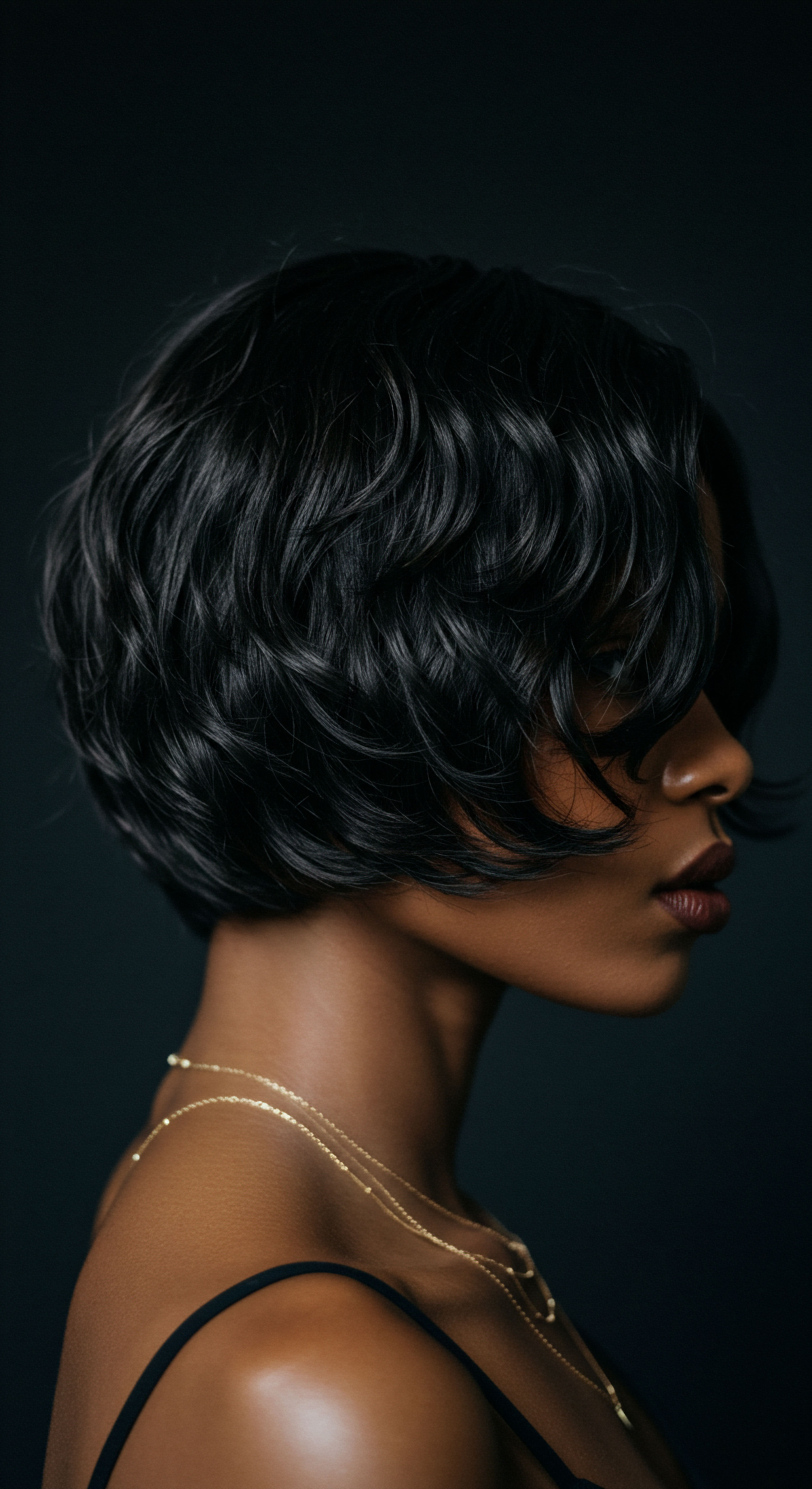
Growth Cycles and Generational Wisdom
Hair growth follows distinct cycles ❉ anagen (growth), catagen (transition), and telogen (rest). These cycles are universal, yet their manifestation can differ with hair type and individual genetics. For textured hair, factors such as protective styling choices and gentle handling during the telogen phase become especially pertinent. Preserving length and maintaining scalp health are often directly tied to these practices.
Generational wisdom, passed down through families, frequently contains observations aligned with these biological realities. The counsel to braid hair before sleep, or to apply certain oils, often predates modern scientific explanation. These practices, honed over centuries, represent an ancestral understanding of hair’s delicate life cycle. They are not merely traditions; they are accumulated insights into maintaining hair’s vitality through its natural rhythms.
A deep respect for these biological underpinnings and the inherited knowledge surrounding them forms the core of a mindful hair journey. It creates a path where science and heritage walk hand in hand.
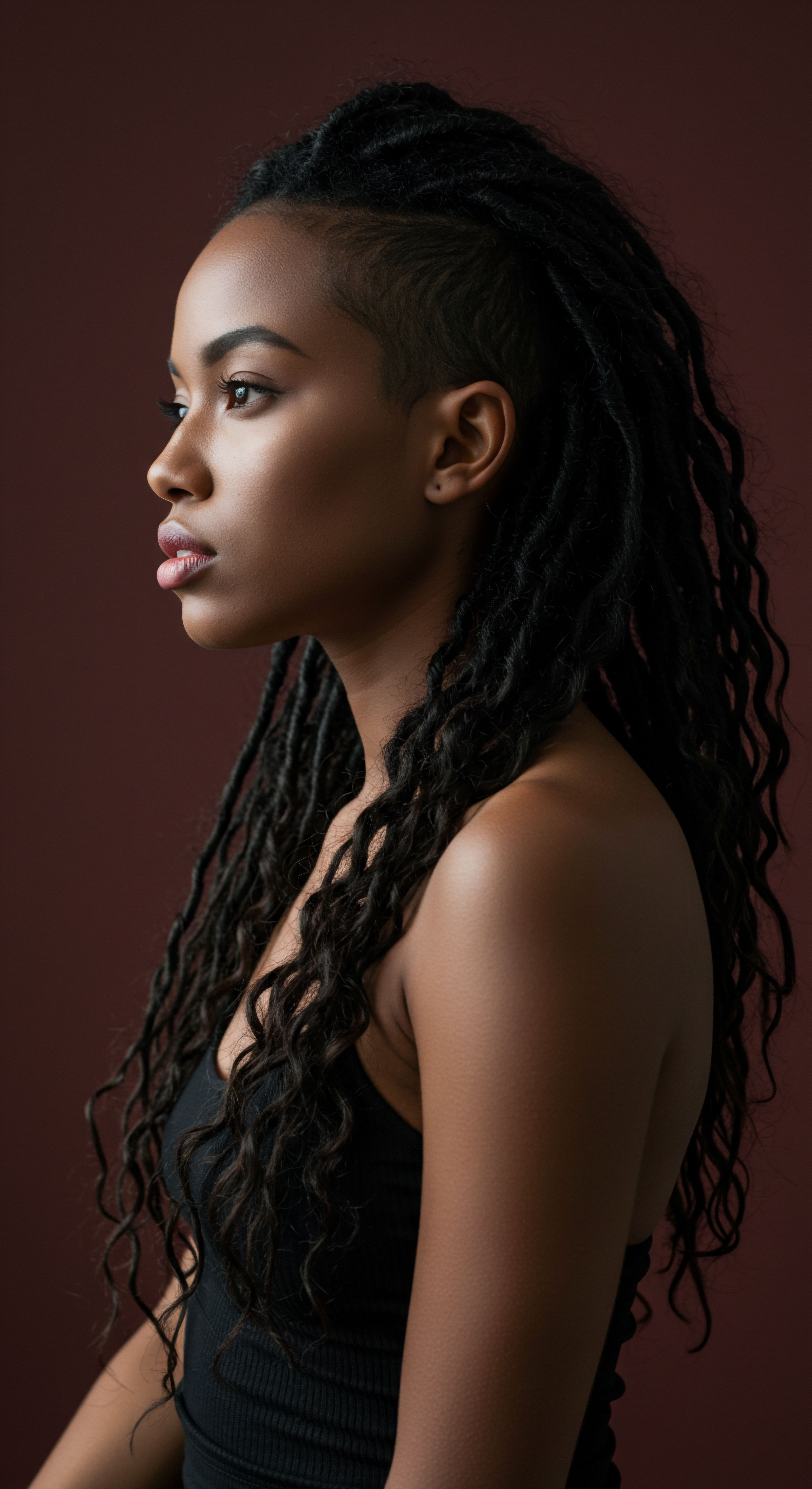
Ritual
Moving beyond the fundamental composition of hair, our attention shifts to the purposeful actions, the repeated gestures that shape its form and well-being. These practices, far from being mere routines, transform into ceremonies, rich with intention and meaning. They are the tangible expressions of how individuals interact with their hair, transforming it, protecting it, and presenting it to the world. This section steps into the practical domain, exploring the various techniques and tools that shape the experience of textured hair, recognizing them as active participants in a dialogue with heritage.

Protective Styles and Identity
The realm of protective styling is expansive, offering a sanctuary for textured strands from environmental stressors and daily manipulation. Styles such as braids, twists, and locs serve a dual purpose ❉ they guard the hair’s delicate structure while also acting as profound cultural statements. Each knot, each coil, each extension can carry generations of artistic expression and community ties. These styles are not simply functional; they are expressions of identity, resilience, and belonging.
- Braids ❉ Ancient origins, signifying marital status, age, or tribal affiliation.
- Twists ❉ Versatile and gentle, offering protection and defining curl patterns.
- Locs ❉ A symbol of spiritual connection, natural beauty, and a lifetime journey.
The artistry involved in creating these styles is often passed from elder to youth, a living tradition. A grandmother teaching a granddaughter to cornrow, or a mother showing her child how to section for twists, are moments of shared legacy. These instances transmit more than just technique; they pass on stories, values, and a sense of continuity. The hands that style are also the hands that transmit cultural memory.
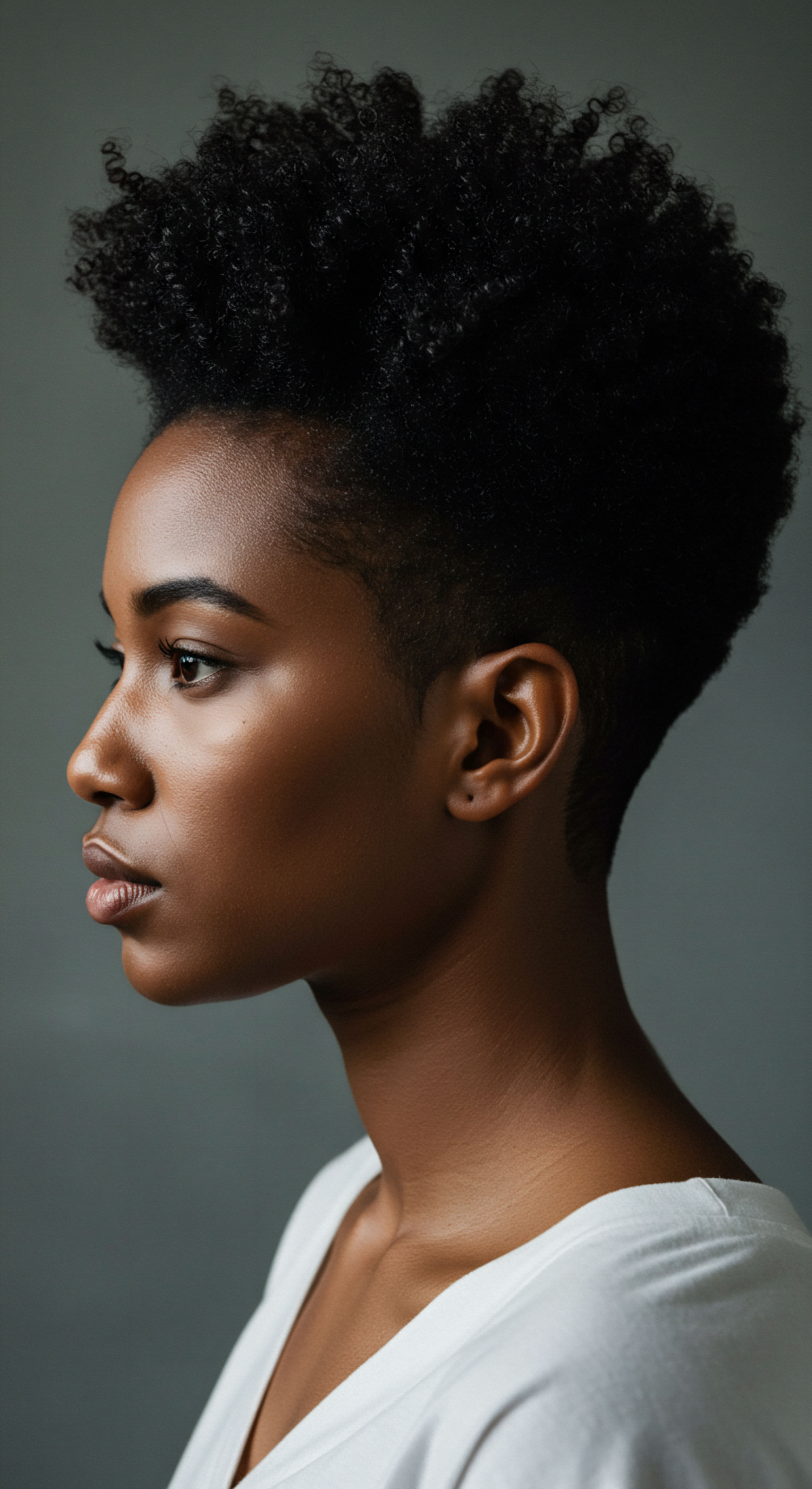
Defining Natural Beauty
The pursuit of natural styling and definition techniques celebrates the inherent beauty of textured hair. Wash-and-gos, twist-outs, and braid-outs are methods that allow the hair’s unique pattern to emerge, free from alteration. These techniques involve careful product application and manipulation to encourage curl clump formation and reduce frizz. The result is a vibrant display of natural texture, a testament to accepting and honoring one’s inherent beauty.
This approach to styling is often a declaration of self-acceptance, a rejection of imposed beauty standards that once marginalized natural hair. It is a personal affirmation, but also a collective statement. When individuals choose to wear their hair in its natural state, they participate in a broader movement of cultural pride and authenticity.
Hair practices are living traditions, transforming routines into ceremonies that connect individuals to their cultural origins.
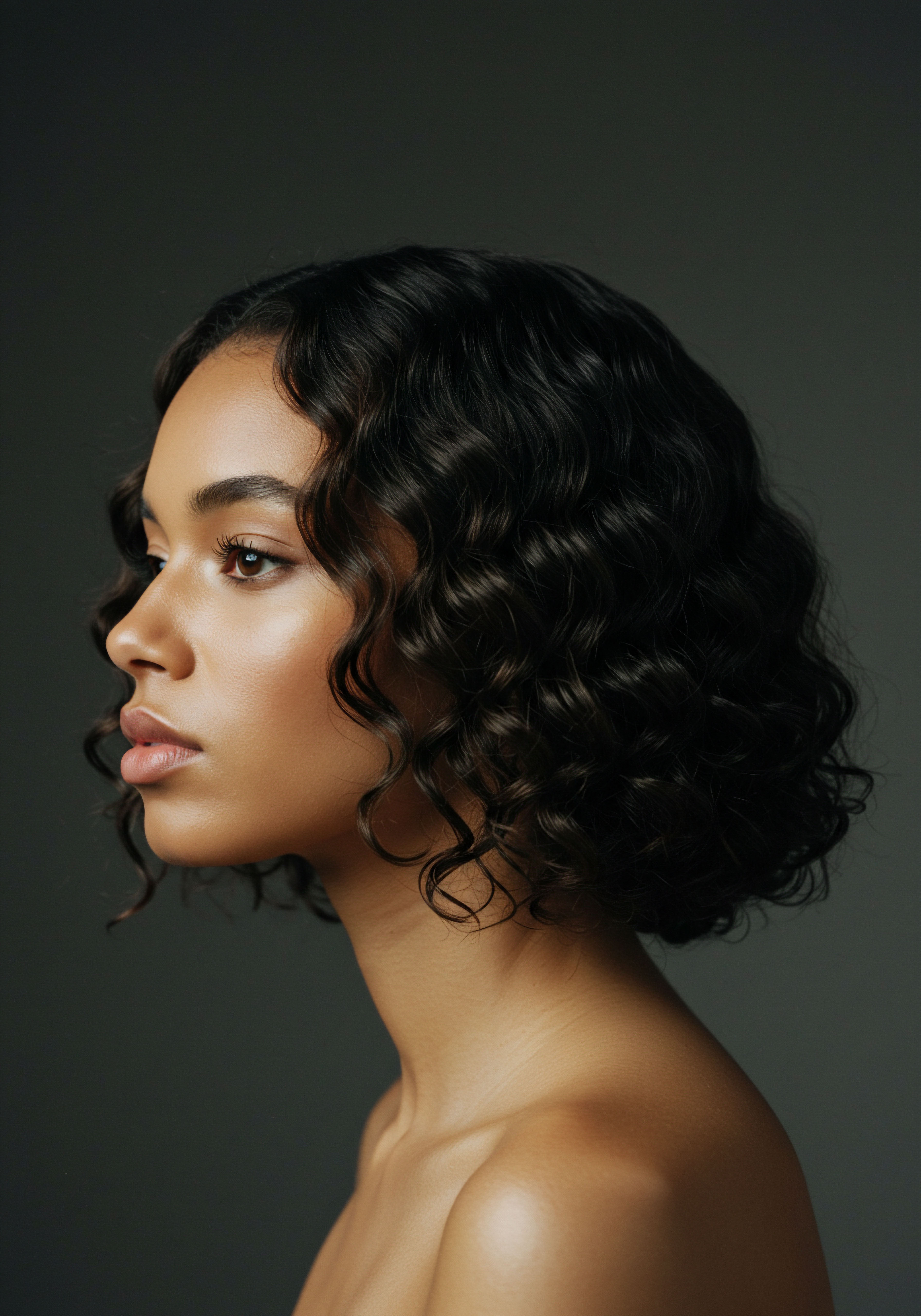
Wigs and Extensions ❉ Historical Adaptation
The use of wigs and hair extensions, while often seen as a modern trend, possesses a rich historical precedent across many cultures. From ancient Egyptian nobility adorning elaborate wigs for status and protection, to African societies using braided extensions for ceremonial purposes, these additions have always been more than mere fashion accessories. They serve as tools for transformation, allowing for diverse expressions of self while also providing protective benefits.
For textured hair, extensions offer a way to experiment with length, volume, and color without altering one’s natural strands. They can be a creative outlet, a means of cultural performance, or a practical solution for hair health. The careful selection of hair type, texture, and color for extensions becomes a deliberate choice, often reflecting personal style within a broader cultural aesthetic.
| Tool Wide-tooth comb |
| Primary Use Detangling coiled hair gently |
| Cultural Connection Minimizing breakage, preserving natural curl patterns. |
| Tool Hair picks |
| Primary Use Adding volume, styling afros |
| Cultural Connection Iconic symbol of Black power and identity in the 20th century. |
| Tool Braiding hair |
| Primary Use Creating extensions, protective styles |
| Cultural Connection Long-standing tradition of hair augmentation for aesthetic and protective purposes. |
| Tool Hair clips |
| Primary Use Sectioning, holding styles |
| Cultural Connection Used in intricate styling, often reflecting regional artistic motifs. |
| Tool These tools are not just functional; they are extensions of cultural practice. |
Each technique, each tool, carries with it a story, a purpose that extends beyond simple grooming. They are active participants in a dialogue between the present and the past, shaping how hair is cared for and how identity is expressed.

Relay
Our journey now deepens, moving from the tangible practices to the profound currents that flow beneath the surface of hair care. Here, we perceive how the act of tending to one’s hair acts as a conduit for far more than mere appearance. It becomes a vessel for transmitting social narratives, a stage for psychological well-being, and a powerful instrument for cultural continuity. This section explores the interconnected dimensions where personal hair care rituals intersect with collective memory, societal expectations, and deep-seated cultural wisdom.
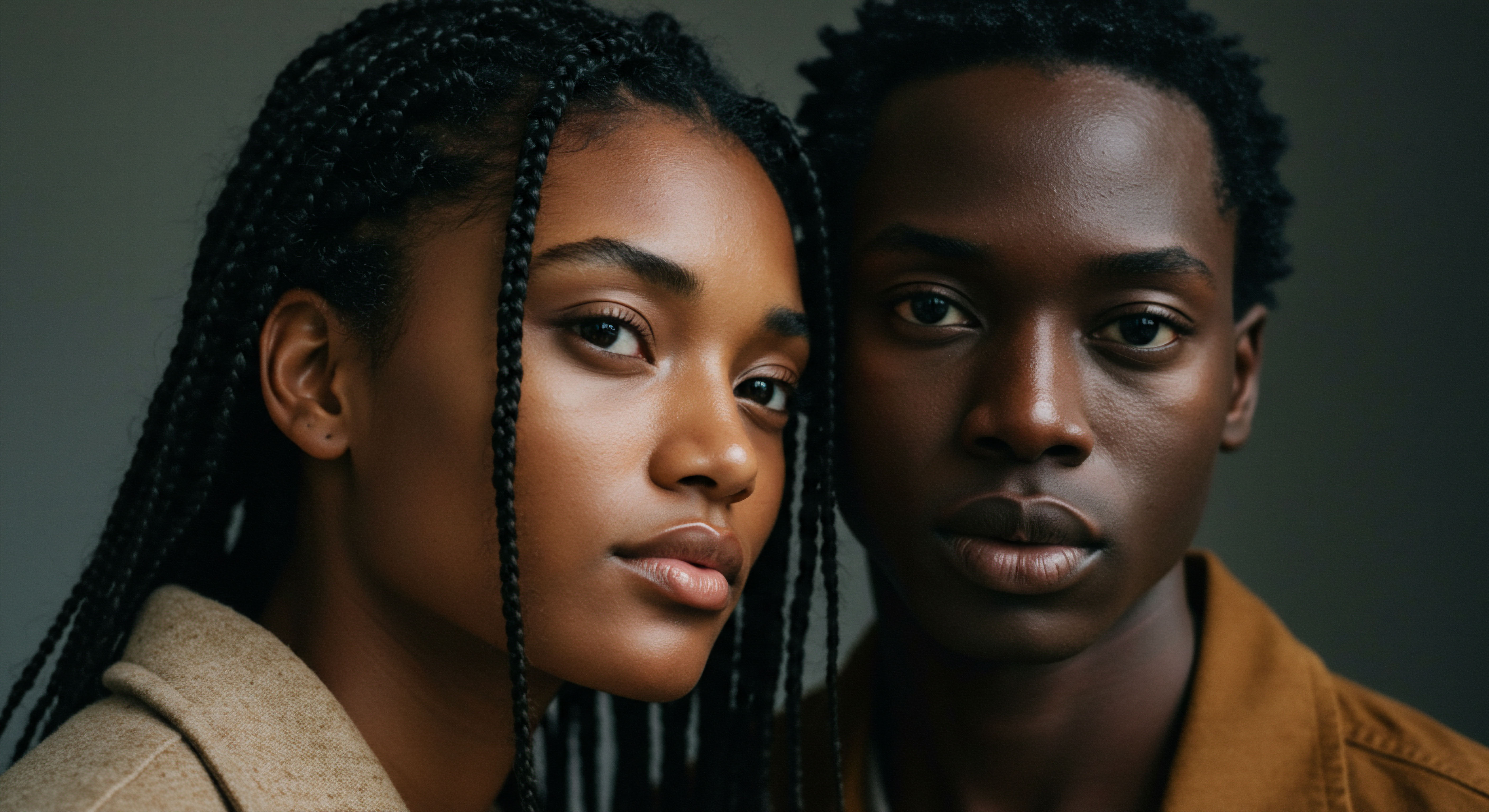
The Nighttime Sanctuary and Collective Care
The transition from day to night often brings a shift in hair care, particularly for textured hair. The nighttime sanctuary, where hair is prepared for rest, holds a unique significance. Wrapping hair in silk or satin, or donning a bonnet, is not merely about preserving a style or minimizing frizz. It is a ritual of protection, a quiet act of care that echoes ancestral practices of safeguarding hair from environmental elements and maintaining its integrity.
Consider the satin bonnet, a seemingly simple accessory. For many, it represents a shared experience, a quiet understanding passed down through generations. It is a symbol of communal knowledge, a practical solution for maintaining hair health that has been adopted and adapted across diasporic communities.
This shared practice strengthens bonds, creating a silent recognition among those who participate in this collective wisdom. The act of wearing a bonnet becomes a daily, gentle reminder of a collective heritage.
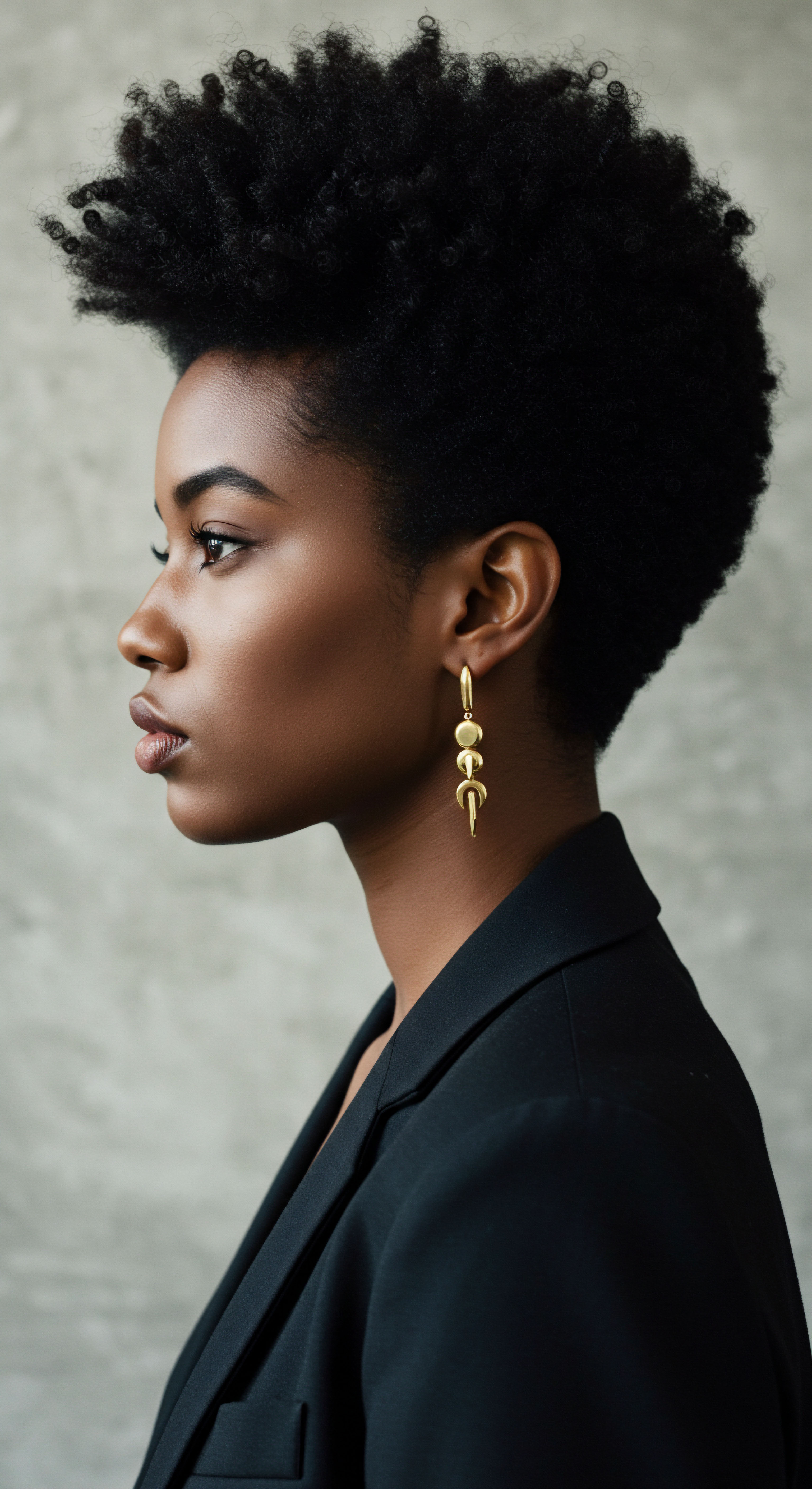
Hair’s Social Resonance
Hair is rarely a neutral topic. Its presentation often carries social weight, communicating status, group affiliation, or personal philosophy. For communities with textured hair, this social resonance is particularly acute, often serving as a visible marker of identity within broader societal structures. The choices made about hair can become statements, declarations of belonging, or acts of defiance against oppressive norms.
The societal pressure to conform to Eurocentric beauty standards has historically placed a significant burden on individuals with textured hair. This pressure can manifest in subtle biases or overt discrimination. Research indicates that such biases are not just aesthetic preferences but can have tangible impacts on life opportunities.
A 2019 study, conducted by Dove and the JOY Collective, found that Black women are 80% more likely to alter their natural hair to meet workplace expectations, and Black women’s hair is rated as less professional than white women’s hair on two separate measures. This data underscores a persistent societal pressure that forces a disconnection from natural heritage in professional settings.
Hair care practices serve as a profound relay, transmitting social narratives, fostering psychological well-being, and ensuring cultural continuity.
Such findings reveal that hair care, far from being a purely personal matter, exists within a larger social matrix. The choice to wear one’s hair naturally, or to adopt protective styles, can become an act of self-affirmation and cultural pride, pushing back against prevailing biases. It is a conscious decision to align personal presentation with cultural heritage, even in the face of external pressures.

Holistic Influences on Hair Well-Being
The health of hair is deeply intertwined with overall well-being, encompassing physical, mental, and spiritual dimensions. Nutritional intake, stress levels, and even emotional states can manifest in the condition of one’s hair. A holistic approach to hair care recognizes these connections, viewing the hair as a barometer of internal balance.
Traditional practices across many cultures often incorporate this holistic perspective. The use of specific herbs, oils, and dietary considerations for hair health is not merely anecdotal; it often aligns with contemporary scientific understanding of nutrient absorption and scalp vitality. These practices are passed down not as rigid rules, but as gentle suggestions for living in harmony with one’s body and the natural world.
For instance, certain indigenous communities have long used plant-based ingredients like aloe vera or specific plant oils for their hair’s vitality. These practices are not isolated; they are part of a broader philosophy of living in reciprocity with nature, where self-care rituals are deeply rooted in ecological knowledge. The wisdom inherent in these traditions offers a rich source of guidance for modern hair care, reminding us that true radiance stems from a deeper connection to self and surroundings.
The transmission of hair care practices across generations acts as a powerful relay, ensuring that cultural identity and communal wisdom persist and adapt through changing times. It is a dynamic exchange, continually shaped by individual experiences and collective heritage.
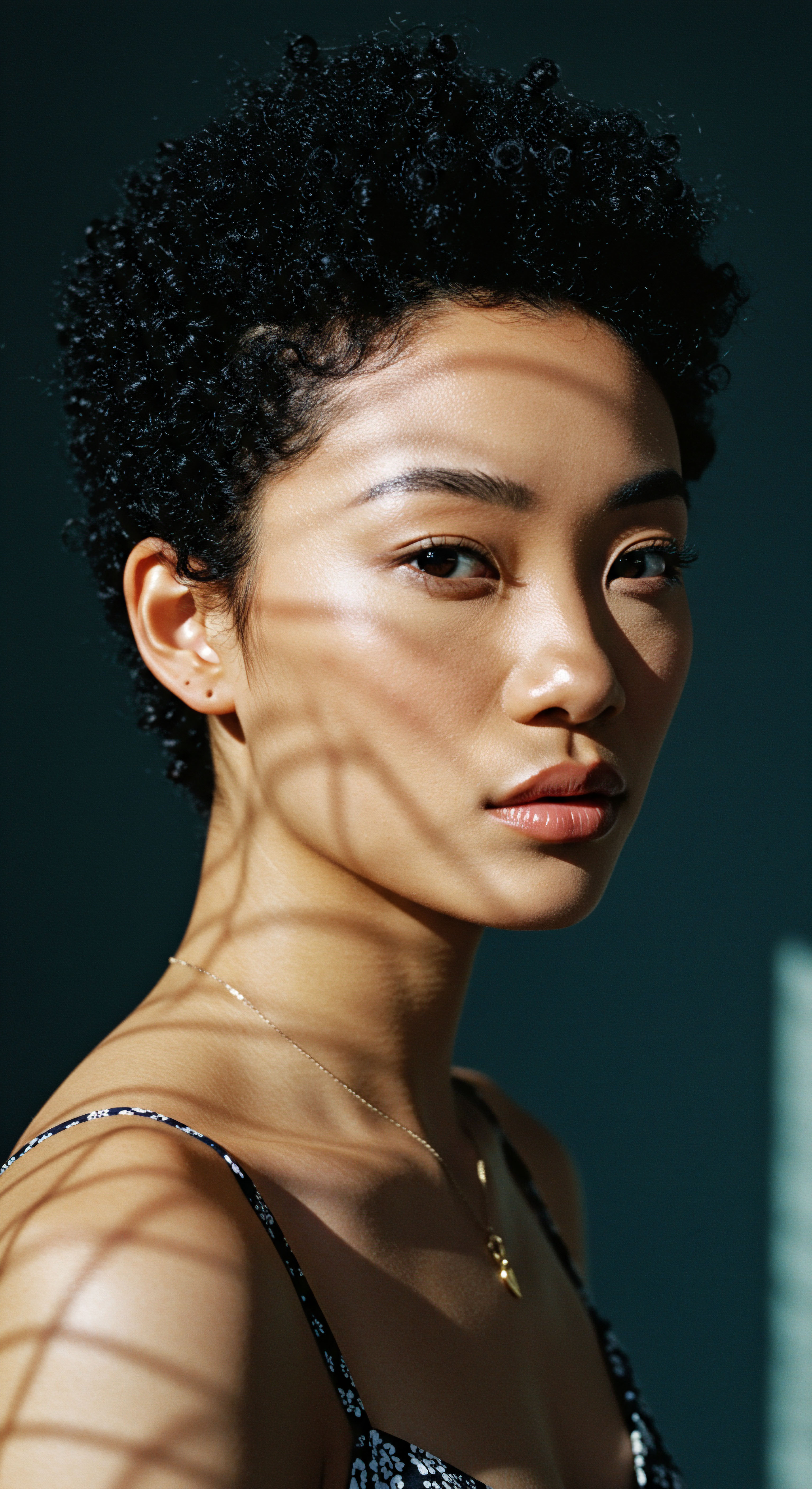
Reflection
The journey through the intricate world of hair care reveals a truth far richer than surface beauty. Each strand, each ritual, each shared story contributes to a vibrant dialogue between past and present, self and community. It is a quiet yet powerful affirmation of who we are, where we come from, and the legacies we carry forward.
The choices made in tending to hair become a living expression of cultural pride, a subtle act of resilience, and a testament to the enduring power of heritage. In every gentle touch, every mindful application, a deeper connection is found, a profound belonging celebrated.

References
- The Perception Institute. (2016). The Good Hair Study ❉ Explicit and Implicit Attitudes Toward Black Women’s Hair. New York, NY ❉ The Perception Institute.
- Byrd, A. D. & Tharps, L. L. (2014). Hair Story ❉ Untangling the Roots of Black Hair in America. St. Martin’s Press.
- Banks, I. (2000). Hair Matters ❉ Beauty, Power, and Black Women’s Consciousness. New York University Press.
- Tate, S. (2007). Black Beauty ❉ Aesthetics, Culture, and Identity. Routledge.
- White, S. (2009). The Black Hair Handbook ❉ A Guide to Styling, Hair Care, and Health. New York, NY ❉ St. Martin’s Griffin.
- Hooks, B. (1992). Black Looks ❉ Race and Representation. South End Press.
- Mercer, K. (1994). Welcome to the Jungle ❉ New Positions in Cultural Studies. Routledge.
- Ebony, S. (2016). The Science of Black Hair ❉ A Comprehensive Guide to Textured Hair Care. S. Ebony.